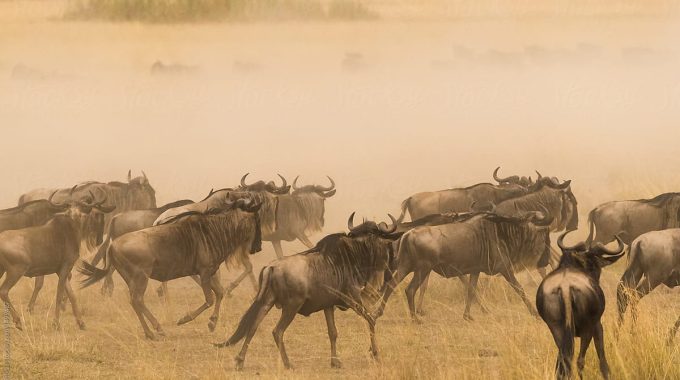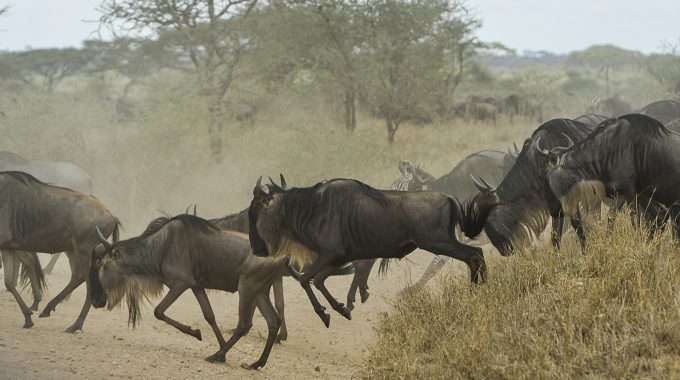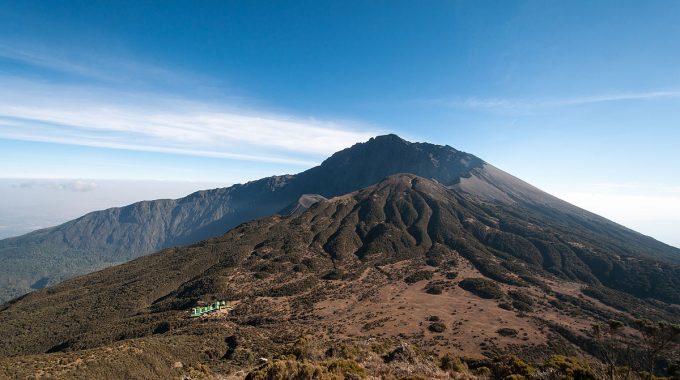How fast can wildebeest run? - The wildebeest, which is also called the gnu, can…
What triggers wildebeest migration?
What triggers wildebeest migration? – The wildebeest migration is primarily driven by the search for fresh grazing and water, and it is closely tied to the seasonal rainfall patterns in East Africa. The migration is not a random event but rather a highly synchronized natural cycle that ensures the wildebeest and other herbivores have access to the best grazing areas at different times of the year. The main triggers for the wildebeest migration are:

1. Rainfall and Availability of Fresh Grazing
- Seasonal Rainfall: The primary driver of the migration is the seasonal rains that fall across East Africa. Wildebeests are grazing animals, and they need fresh, nutritious grass to survive. The long rains (from March to May) and short rains (from November to December) trigger the migration, as the herds follow the rains to areas where fresh grazing is available.
- When the rainy season begins in one area, new grasses grow, which attract the wildebeest and other herbivores. As the rains end, the grazing starts to deplete, pushing the animals to move toward greener pastures.
- The migration pattern is thus a direct response to the need for food and water. Wildebeests, along with zebras and gazelles, move in a clockwise circular route between the Serengeti in Tanzania and the Masai Mara in Kenya, following the rain.
2. The Desire to Calve in Safe Areas
- Calving Season: One of the most crucial parts of the migration is the calving season. Every year, the wildebeest give birth to over 500,000 calves in a concentrated period (usually between January and March in the southern Serengeti). This synchronized calving is timed to coincide with the fresh grass that sprouts after the short rains in the southern Serengeti plains.
- The calving grounds are chosen because they provide ample fresh grass and relatively few predators at the beginning of the season. The large number of calves born in a short time overwhelms predators and increases the survival rate of the young.
3. Rising Temperatures and Water Sources
- As the year progresses, the temperature in East Africa rises, and water sources in the Serengeti and Masai Mara dry up. This forces the wildebeest and other herbivores to search for new waterholes. When water becomes scarce in one region, the herds migrate to places with better access to water.
- Rivers, especially the Mara River and Grumeti River, are key locations during the migration, as the animals need to cross these water sources to continue their journey.
4. Predator-Prey Dynamics
- Predation Pressure: Predators such as lions, leopards, cheetahs, and crocodiles play an indirect role in the migration. While the need for food and water is what drives wildebeests most of the time, predators also have an impact on their movements. Predators tend to follow the migration, as they know that these large herds are a valuable food source.
- The wildebeest, in turn, exhibit some behavior to avoid predators, such as moving in large herds for safety in numbers. The migration creates opportunities for dramatic predator-prey interactions, particularly during river crossings.
5. The Synchronization of the Herd
- Group Movement: Wildebeests are highly social animals, and the migration is a collective movement. The herd instinct plays a crucial role in the timing and direction of the migration, even though individual decisions do not entirely determine it. Wildebeest travel in large, synchronized herds of thousands of animals, and even young calves quickly learn to follow the older members of the group.
6. Climate and Environmental Factors
- Climate Variability: Though rainfall is the primary trigger for the migration, changes in climate or weather patterns (such as droughts or unusually heavy rainfall) can shift the timing and direction of the migration. For example, if there are irregularities in rainfall, the timing of the migration may vary slightly, but the overall movement pattern remains largely consistent.
- Drought: In years of extreme drought, the wildebeest may start migrating earlier in search of water, or they may face challenges finding enough food, which could impact their survival rates and that of the young calves.
Summary of the Key Triggers for the Wildebeest Migration:
- Rainfall: Seasonal rains in specific areas trigger new grass growth, prompting the migration.
- Fresh Grazing: The wildebeest move in search of more nutritious grazing land after grazing areas become depleted.
- Calving: The migration is synchronized with the calving season to give birth in safe, nutritious areas.
- Water Availability: Drying waterholes and rising temperatures push the animals to find new sources of water.
- Predators: The presence of predators indirectly influences the timing and movement of the herds.
- Climate Conditions: Variations in climate, such as drought or irregular rainfall, can impact the timing and intensity of the migration.
The migration is a cyclical and adaptive response to the natural environment, and it is one of the most impressive examples of how animals can instinctively respond to environmental pressures to ensure their survival.



